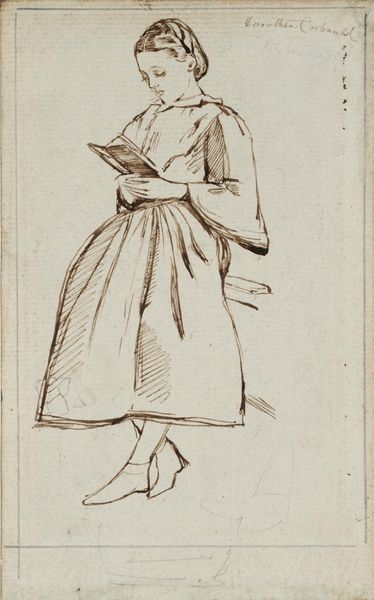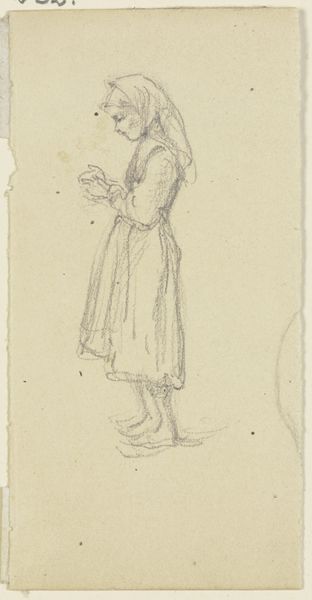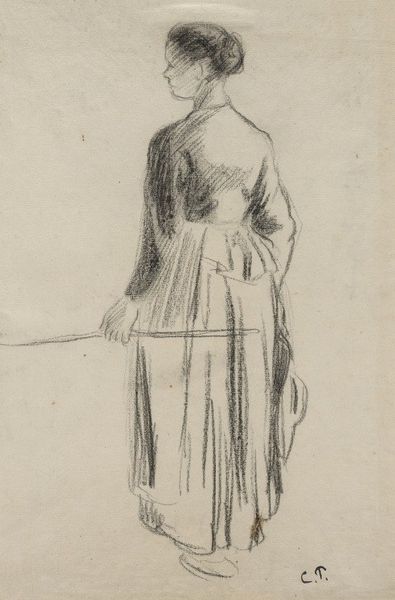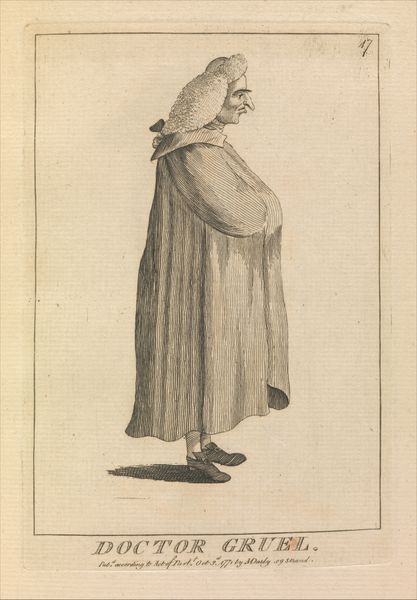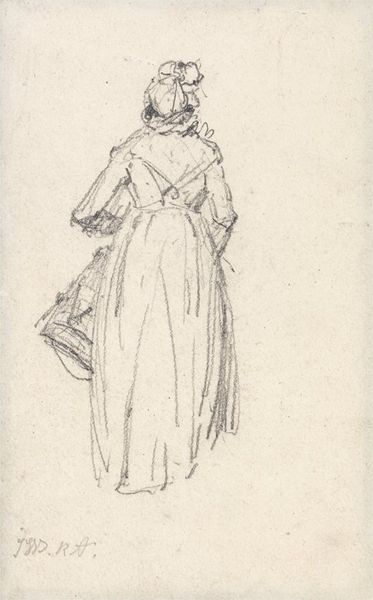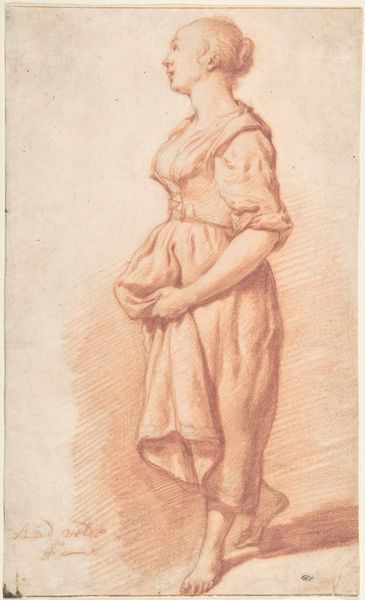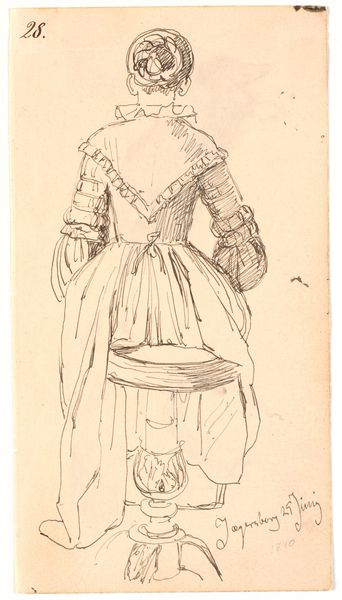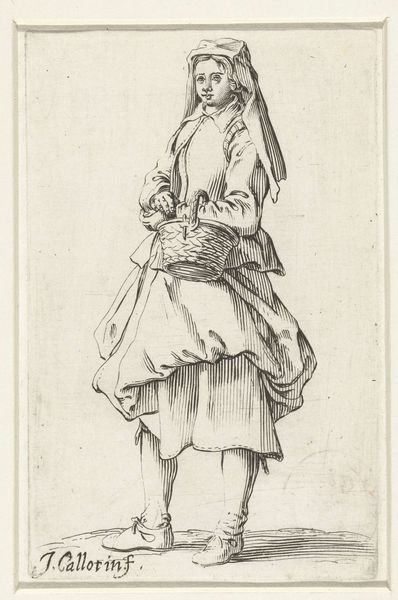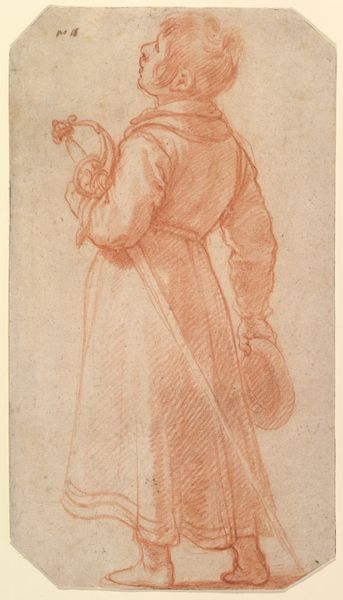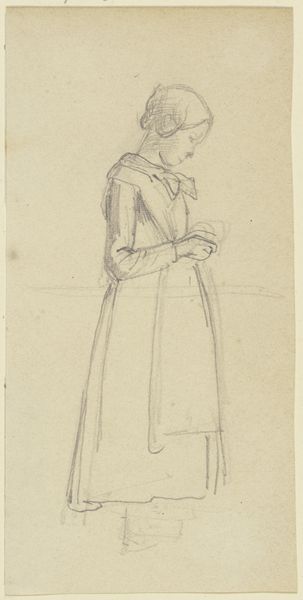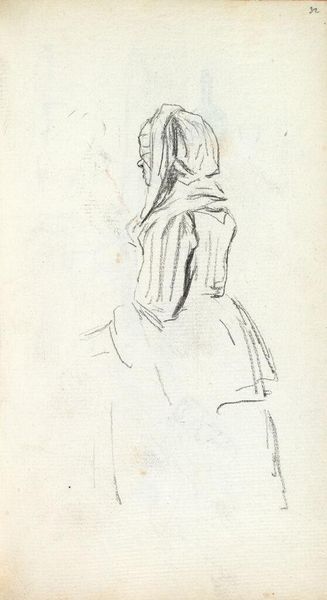
drawing, ink, chalk
#
portrait
#
drawing
#
charcoal drawing
#
figuration
#
ink
#
chalk
#
15_18th-century
#
portrait drawing
Copyright: Public Domain
Curator: This drawing, "Stehendes Mädchen in Tracht," or "Standing Girl in Traditional Dress," comes to us from Georg Melchior Kraus, dating around 1771 to 1772. It is held in the Städel Museum's collection. Editor: My first impression is one of simplicity and almost haunting quietness. The limited palette creates a muted, somewhat melancholy mood. Curator: Absolutely. And that simplicity speaks to a critical tension within 18th-century social structures. Consider the representation of young women, especially those in 'traditional dress'. What performative role are they occupying, and how much agency do they truly possess in crafting their own image? What constraints governed her social visibility, as a woman depicted from behind and somewhat anonymized? Editor: It’s the washes of ink that immediately catch my eye. Note how Kraus employs thin, translucent layers to define the fabric, playing with light and shadow to give form to the figure. It creates a beautiful tonal harmony. Curator: Precisely. That rendering of form allows for a potent reading. It allows for considering broader debates about class and cultural identity within the burgeoning Enlightenment. Her very 'ordinariness' in that era pushes boundaries – a commentary on authentic representation versus idealized portraiture. Editor: I find myself drawn to the pose – the slightly awkward angle, her hands clasped behind her back. This draws me into studying the figure itself. Semiotically, what meanings might be gleaned? The composition directs our attention towards form over the sitter's personality. Curator: Yes, it's precisely that turn away that fascinates. The averted gaze allows for a collective projection of anxieties, expectations, and social scripts mapped onto the female form. This artwork provides access to reconsider the legacy of power and the male gaze within the visual lexicon. Editor: It is a fascinating dialogue between form and content, isn’t it? Looking more at the balance, the artist guides my focus. Kraus guides the viewer to appreciate not just who is represented but how, creating layers of visual significance. Curator: It forces us to consider those complexities and how they shaped not only the artwork, but broader understandings of identity and social visibility. Editor: A beautiful piece offering many formal perspectives. Curator: Agreed, a compelling reflection on the historical constructs.
Comments
No comments
Be the first to comment and join the conversation on the ultimate creative platform.
